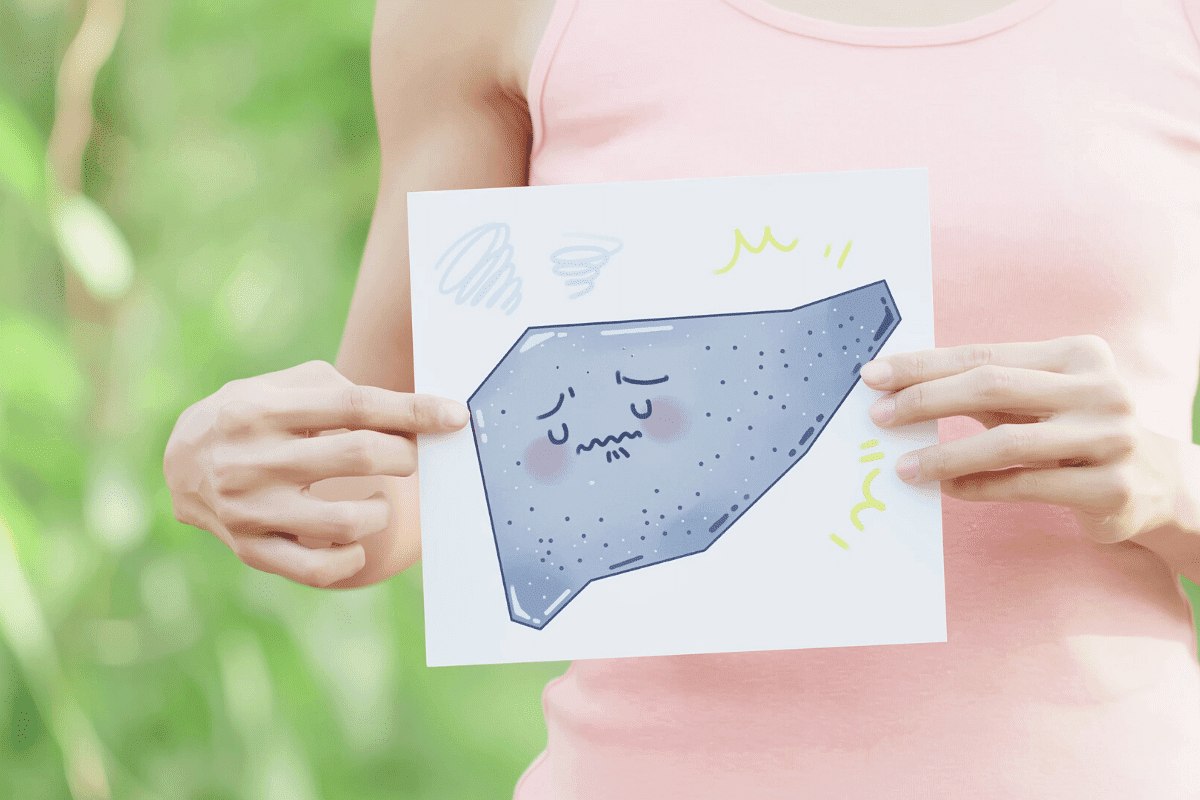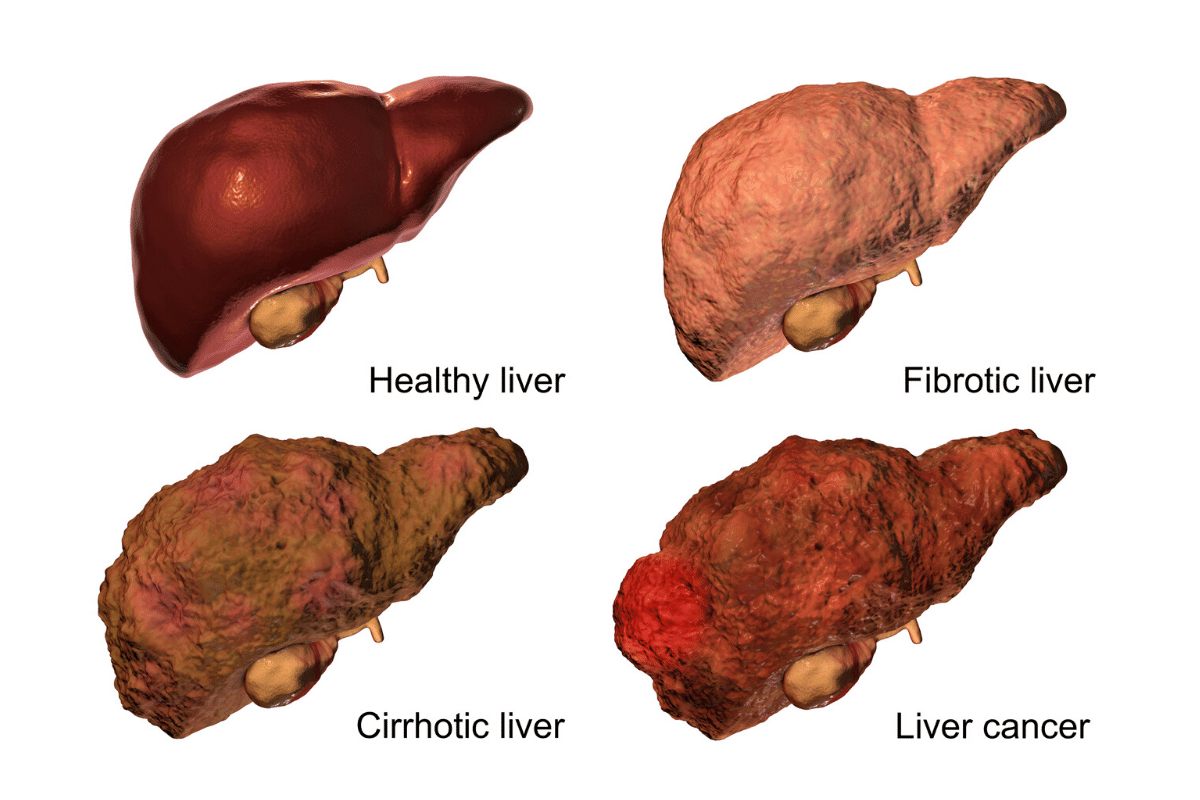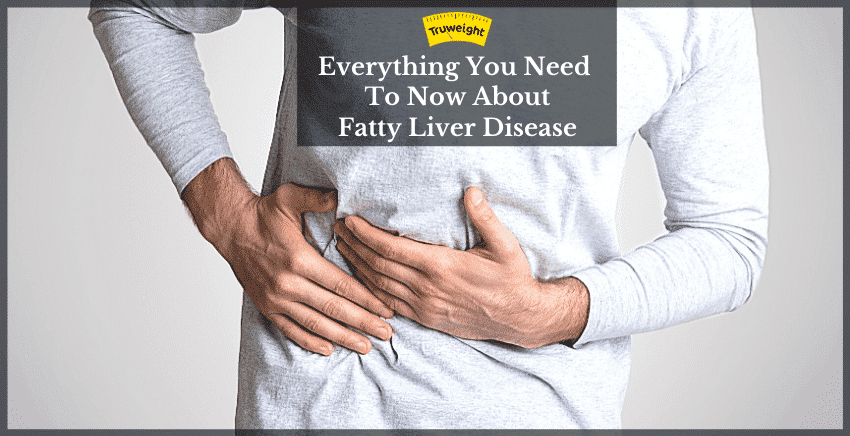Medically reviewed by Dr. Shunmukha Priya, Ph.D. in Food Science and Nutrition
Drinking alcohol more often, has numerous disadvantages over your health; and the major damage is caused to your liver.
Fatty liver disease occurs when your liver gets filled up with too much fat and it is majorly caused by frequent consumption of alcohol. This may or may not be a life threatening disease, but your liver faces an enormous amount of problems.
Introduction
Fatty liver disease (FLD) crops up when your liver cells get built up with too much fat. The liver generally has some amount of fat in it; but if the fat is more than 5% then it is known as hepatic steatosis that is fatty liver disease.[1]
The signs and symptoms of fatty liver disease are hardly seen. Sometimes there could be some pain in the upper right side of the abdomen or one may experience tiredness.
With increased pain and symptoms, people with fatty liver disease may develop a series of complications. One may witness liver scarring; it is also known as liver fibrosis.

If the liver fibrosis gets severe, it will lead to more severe complications like cirrhosis. It is clear to say that this may end up in liver cancer and also esophageal varices.
Because of very few visible symptoms of fatty liver disease, many tend to ignore in the initial stages. And this leads to dangerous consequences to your body and especially to the liver functions.
Hence it becomes important to know and understand the entire scenario on this part of the disease.
Types Of Fatty Liver Disease
Fatty Liver Disease may occur in two of the forms:
- Non-alcoholic fatty liver disease (NAFLD): It is one of the common chronic diseases among the adults. In this case the liver cells get built up with fat without any regard to the drinking alcohol.
NAFLD is the fat deposition in the liver with hepatocytes that has exceeded 5% and this occurs among individuals with little or no alcohol consumption.
- Alcoholic fatty liver disease: If you are alcoholic, that is if you drink more than two drinks per day, fat gets built up in the liver cells; hence causing alcoholic fatty liver ( For women it is more than one drink per day and for men, it is more than two drinks per day).[2]
Causes Of Fatty Liver Disease
Accumulation of fat in liver occurs in some and it does not in others; this particular difference of occurrences is not really known yet. Also, only in some of the cases, fatty livers develop inflammation and that leads to cirrhosis; the reason for this too is not known yet.
Both Non-alcoholic fatty liver disease (NAFLD) and non-alcoholic steatohepatitis (NASH) may have caused due to the following reasons:
- Overweight or obesity.
- High consumption of alcohol. (For women it is more than one drink per day and for men, it is more than two drinks per day)
- Insulin resistance, in which your cells do not take up sugar in response to the hormone insulin.
- High blood sugar (hyperglycemia), indicating prediabetes or type 2 diabetes.
- High levels of fats, particularly triglycerides, in the blood.
Fatty liver occurs when these causes come in combined form. They promote the deposition of fat in the liver cells.
In some people, the fat accumulated in the liver cells acts like a toxin; causes liver inflammation and then NASH. This may lead to a build-up of scar tissue in the liver.[3]
Some of the less common causes of fatty liver include:
- Losing weight in very less time.
- Infections like hepatitis C.
- Some of the drugs and medications like methotrexate.
- Genetic transfers.
- Pregnancy.
Symptoms Of Fatty Liver
The signs and symptoms of fatty liver disease are hardly seen or experienced. But it is true that in the initial stages you may experience pain in the upper right side of abdomen or sometimes even experience tiredness.
There are some common symptoms that one may notice when you develop a fatty liver:
- Loss of appetite.
- Fatigue.
- In later stages, itching skin, icterus.
- Swelling of the abdomen and legs (edema)
- Confusion.
When in case of Non-alcoholic fatty Liver Disease (NFLD), the signs and symptoms are generally nil during the initial stage. Once the diseases progress, along with the above said symptoms. There are some rare symptoms, you can notice that is:
- Fatigue and drowsiness.
- Constant pain or cramp in the upper right part of the abdomen
Signs and symptoms of another form of fatty liver, that is Non-alcoholic Steatohepatitis (NASH) and also the advanced cases of cirrhosis include:
- Swelling in the abdominal region, called as ascites. This is more of a visible symptom.
- The blood vessel just below your skin’s surface gets enlarged.
- Enlarged spleen.
- Palms tend to go red.
- Your skin, eyes, nails get yellow (jaundice).
Risk Factors
When it comes to non-alcoholic fatty liver disease, the risks are a lot. There are certain diseases and health conditions that might increase the risks, like:
- Metabolism related syndrome.
- Obesity, particularly when fat is concentrated in the abdominal area.
- Polycystic ovary syndrome or PCOS in women.
- Sleep apnea.
- Type 2 diabetes.
- Underactive thyroid (hypothyroidism).
- Underactive pituitary gland (hypopituitarism).
- High cholesterol or body fat.
- High levels of triglycerides in the blood.
When it comes to non-alcoholic steatohepatitis (NASH), it occurs mostly in these groups of people:
- Older people.
- People with diabetes.
- People with body fat concentrated in the abdominal region.
It is evidently difficult to differentiate between non-alcoholic fatty liver disease (NAFLD) and non-alcoholic steatohepatitis (NASH) without further testing.[4]
Complications
One of the main complications of non-alcoholic fatty liver disease (NAFLD) and non-alcoholic steatohepatitis (NASH) is cirrhosis; it is that late-stage that scars the liver.

When inflammation occurs during non-alcoholic steatohepatitis, it causes liver damage. In response to this cirrhosis occurs. When the liver tries to halt inflammation, it develops fibrosis that is scarring of the liver. When this severity increases, fibrosis tends to spread to almost all of the liver tissues causing more danger.
If you do not get treated at this stage, cirrhosis can lead to:
- Swelling in the abdominal region, called as ascites. That is by fluid buildup.
- Swelling of veins in your esophagus (esophageal varices), which can rupture and bleed.
- Liver scarring.
- Confusion, drowsiness, and slurred speech (hepatic encephalopathy).
- Liver fibrosis.
- Liver cancer.
- End-stage liver failure, which means the liver has stopped functioning.
Around 5% and 12% of people with NASH tend to reach the stage of cirrhosis.[5]
Diagnosis
In case you must be diagnosed for fatty liver, these are the consideration that will be taken care of:
- Family history.
- History of Alcohol consumption.
- History of long-term intake of some Medications.
- Hepatomegaly on examination.
- Liver function tests
- Complete Blood Check
- USG Abdomen
- CT-scan.
- Biopsy.
- MRI.
- FibroScan.
A gastroenterologist can suggest the test based on your symptoms.
Prevention
As such is the risk, you also have some effective prevention measures that will help you reduce the risks of non-alcoholic fatty liver disease:
- Let yourself into a healthy diet: A healthy plant-based diet that is rich in fruits, vegetables, whole grains, and healthy fats can build you up to fight greater health problems.
Avoid foods and drinks with large amounts of simple sugars, especially fructose. BCAAs (Branched Chain Amino Acids) help in improving liver health. Natural sources of BCAAs are dairy products, nuts, seeds, tofu, legumes.
MCTS present in coconut oil, palm kernel oil, butter, milk, yogurt, vitamin E supplements protects the liver from steatosis and hence can be added in the diet.
Omega-3 fatty acids are important for the liver and so, fish oil supplements can be given. Nuts, chia seeds, avocadoes, flax seeds are rich sources for omega-3 fatty acids.
- Maintaining a healthy body weight: Obesity is the cause for multiple health issues and so is for fatty liver disease. In case of overweight or obese, try and reduce as much weight as possible until you reach a right BMI.
If you are already in the right weight, then maintain it by healthy eating and regular exercises. Keep your weight in check on a regular basis.
Avoid drastic weight loss regimens. Consult a nutritionist and follow the diet based on your requirements.
- Exercise and Cardio: Always spend a minimum of 30 minutes a day in exercising. If you have not been exercising for a long time, then make sure to consult a doctor before you start.[6]
- Healthy Lifestyle:
Alcohol intake: If you have the habit of drinking alcohol, avoid alcohol intake till the liver enzymes reach normal. And in the future, take alcohol in limited quantities.
Sleep: Avoid late night sittings. Sleep on time and good quality sleep of 6 to 8 hrs. Studies have shown that sleep deprivation could be one of the reasons for NAFLD. [7]
Next Read: 7 Foods To Eat When You Have Liver Problem
Home Remedies
- Turmeric has a strong affinity for blood and digestive systems.
- Chyawanprash can be taken about a teaspoon a day or as prescribed by the doctor.
- Lemon water in the morning: About 1 glass(200ml) can be had on waking, the rind can be added to water after squeezing.
- Apple cider vinegar in the morning before breakfast is helpful in improving liver health.
- Green tea
- Herbs like Bhumyamalaki, Amalaki, Guduchi or giloy juice; milk thistle are great additions to the diet at this time.
- Blue water: One way to settle pitta is to ingest water that has been infused with cooling blue light. Fill a clear glass jar with purified water. Cover the jar with blue cellophane. Place under the sun for a couple of hours. Drink one to 3 cups of this water per day.
Possible superfoods such as Trufiber, alma drink, red poha,Gluten free atta can be included. The diet and be of complex carbs, good protein in some of our products like shake-a-day and are exceptionally good to improve liver health. Triphala is also beneficial in detoxification and helpful in strengthening the liver.
Conclusion
The liver damage is like breaking away your metabolic capability. It causes more internal problems and results in multiple health problems. Alcohol consumption is generally known to damage your liver; and it is advised to have a limit on its intake.
With certain treatments and lifestyle changes, you can totally overcome these health problems and also get better at health. Our program at truweight is more efficient and has had an excellent impact on people with several health problems.
Join us today and feel great!
